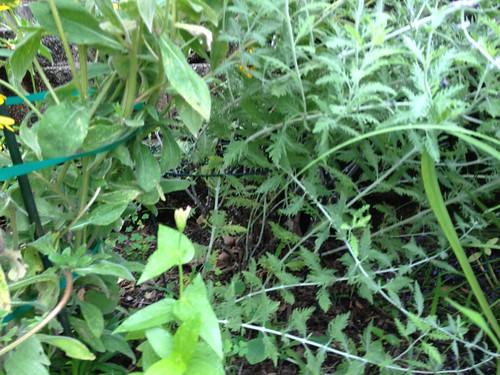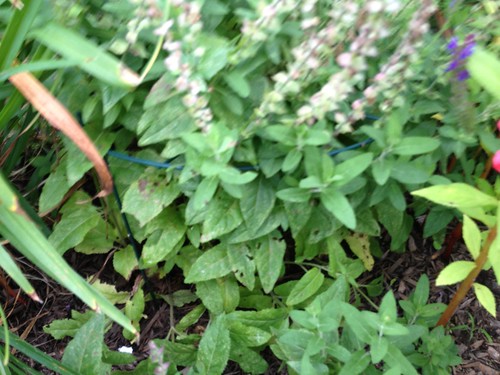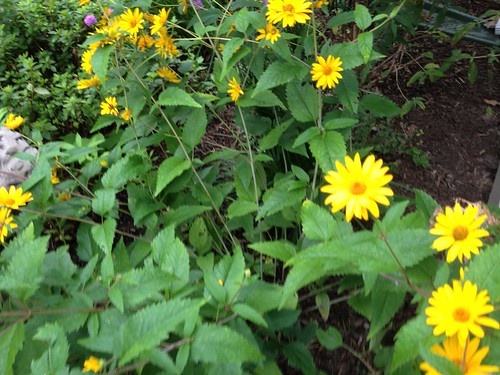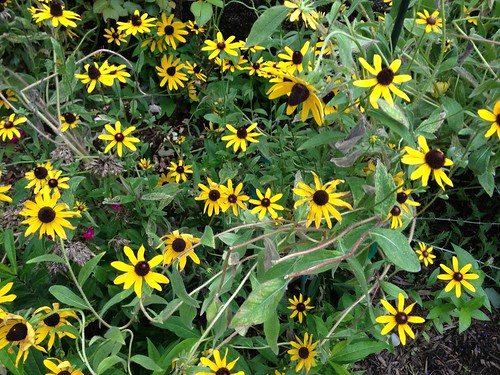... from White Flower Farm
Light/Watering: In general, these lush vines like at least six hours of sun; some varieties are adapted to partial shade and all benefit from afternoon shade in the South. Clematis prefers a cool root run, so lay flat stones at its base, or plant annuals or shallow-rooted perennials around them. Regular watering is desirable, especially during seasonal dry periods. Clematis is deep-rooted, so water thoroughly.
Fertilizer/Soil and pH: Clematis is at its best in rich soils with good drainage. It prefers a neutral soil, so check pH and add lime if needed. Avoid fresh manures. Clematis is a heavy feeder; supply a low nitrogen fertilizer such as 5-10-10 in spring, when the buds are about 2 inches long. Alternate feedings every 4 to 6 weeks with a balanced 10-10-10 fertilizer. Continue this alternate feeding until the end of the growing season.
Pests/Diseases: Clematis is susceptible to fungi that can cause the vine to suddenly wilt and turn brown or black. Carefully prune out all diseased tissue and destroy; disinfect your pruners with a bleach solution. Generally this disease is not fatal, especially if you have planted the vine correctly, as dormant buds will send up new growth from the crown. Handle gently when planting and be careful when cultivating, as physical injury to the stems can cause them to wilt and die.
Reflowering: To promote reflowering for late season bloomers during the growing season, the vine can be cut by one-half after the main bloom period. Varieties that flower on old and new wood will often throw out a few blooms at the end of the growing season.
Transplanting: Young vines may be moved with plenty of soil as long as they are watered religiously. Depending on variety, cut back lightly or severely before moving in early spring.
Pruning: Dead or damaged stems may be removed at any time. Early in the first spring after planting, prune the stems of all Clematis varieties down to the lowest pair of healthy buds. Thereafter, prune to control size and shape or to encourage more profuse bloom.
Flowering tends to decline on stems that are four or more years old, so it's a good idea to prune out very old stems periodically in early spring. This pruning helps produce more compact plants with flowers closer to eye level. Sometimes, on older vines, the flowering is confined to a small area at the tops of the stems. If you wish, you can rejuvenate old plants by cutting them back severely, to about 18in. Wait until after the first flush of bloom to perform the surgery.
Group II plants bloom first on old wood and then again on new; prune lightly in early spring to shape and remove weak growth and then prune after bloom if desired. Group II varieties include Rosemoor™
End of Season Care: Plants may be mulched, but take care to keep mulch material away from the crowns and stems of the plants. Check to make sure that the vines of Group I and II plants are tied securely to supports to withstand winter winds.
Calendar of Care
Early Spring: Fertilize with 5-10-10 when new growth reaches two inches. If you need to move a plant, transplant young vines now. Wait until new growth appears before removing dead or damaged stems and before pruning as required by variety: leave Group I Clematis alone; prune Group II plants lightly to shape and remove weak growth; cut Group III varieties back to 12 inches above the ground, or higher if you desire taller vines.
If this is the first spring after planting, prune stems of all varieties down to the lowest pair of healthy buds to encourage strong growth and new stems.
Mid-Spring: Continue feeding every month, alternating 5-10-10 with 10-10-10. Plant annuals at base of plants if unprotected by flat stones to allow for a cool root zone. Gently tie vines to supports as they grow.
Late Spring: Mulch if desired but keep material away from crowns and stems. Water thoroughly if season is dry. Cultivate around vines with care as physical injury will cause wilting and death of injured stems. Continue to guide new growth by tying to supports as needed. Lightly prune Group I Clematis immediately after flowering to shape the vines if needed.
Summer: Watch for signs of fungal wilt and remove and destroy affected plant parts if it occurs, then sterilize pruners with bleach solution. Group II Clematis may be pruned back by one-half after main flush of bloom to encourage strong growth and new flowers. Continue to water if conditions indicate.
Fall: Check to be certain that the vines of Group I and II varieties are tied securely to supports to withstand winter wind and snow. Mulch if desired, keeping material away from the crown. If the season is dry, water well and deeply.





